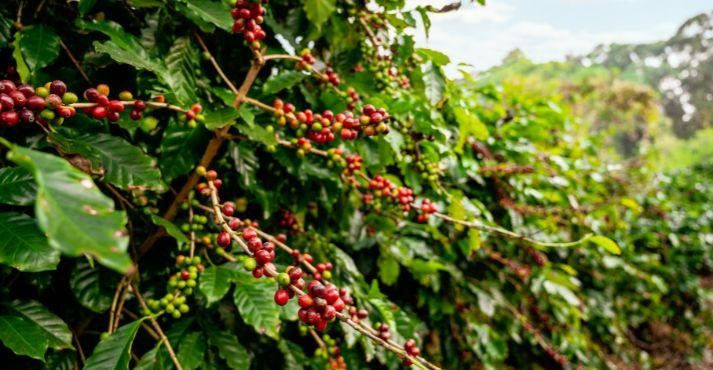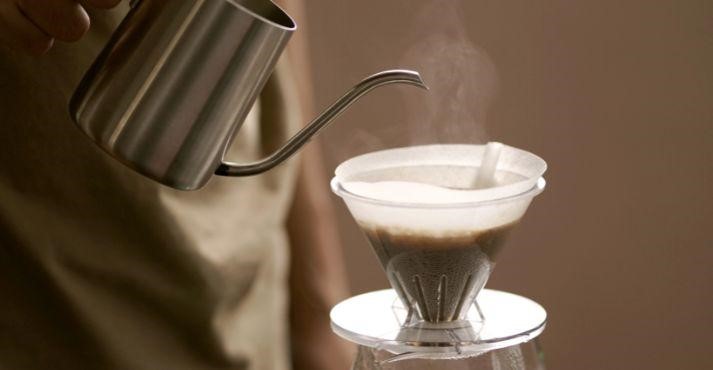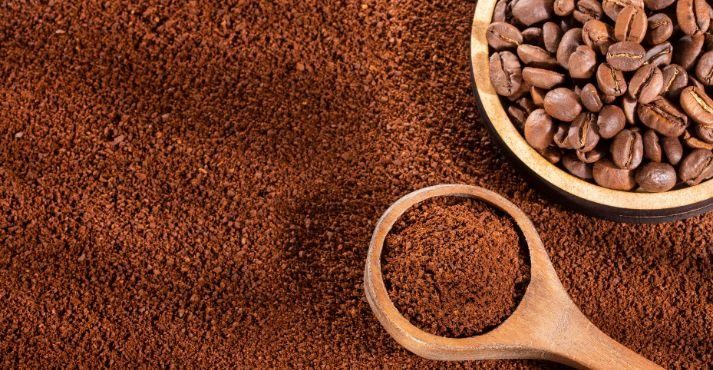Did you know that single-origin coffee has gained immense popularity worldwide among coffee enthusiasts? According to recent studies, the demand for single-origin specialty coffee has increased by over 10.5% in the last year.
As people become more interested in the story behind their coffee, they turn to single-origin coffee to experience unique flavors and learn about its origins.
In this article, we will explore single-origin coffee, its history and origin, the differences between single-origin coffee and blends, and why it is considered a specialty coffee.
Whether you’re a coffee lover or just curious about this trend, read on to discover more about the fascinating world of single-origin coffee.
What is Single-Origin Coffee?

Single-origin coffee refers to coffee from a single geographic location, such as a specific country, region, or even a single farm.
Unlike blended coffees, which mix beans from multiple sources, single-origin coffee allows consumers to experience the distinct flavors and characteristics unique to that area. This can include variations in taste, aroma, and even the story behind the beans.
The term single-origin is significant because it implies higher quality and traceability. When you purchase single-origin coffee beans, you can often learn about the exact farm or region where the coffee was grown, the farmers who cultivated it, and the specific methods used in its production.
This transparency ensures a unique and high-quality coffee experience and supports fair and sustainable farming practices.
Understanding coffee types and origins allows consumers to appreciate the diversity and craftsmanship involved in coffee production.
Whether a bright and fruity Ethiopian coffee or a rich and chocolatey Colombian brew, single-origin coffee offers a journey of flavors that blends cannot match.
Regions Known for Single-Origin Coffee
Single-origin coffee comes from various regions worldwide, each offering unique flavors and characteristics. Let’s explore some of the most renowned regions known for their single-origin coffee.
Africa (Ethiopia, Kenya)
Africa is often considered the birthplace of coffee, particularly single-origin coffee. Ethiopian coffee is celebrated for its bright and fruity flavors, with notes of blueberry, citrus, and floral undertones.
Kenyan coffee is equally distinctive. It is known for its full-bodied richness and vibrant acidity, often showcasing flavors like blackcurrant, tomato, and wine. These regions’ unique climates and altitudes contribute significantly to their coffees’ complex and exciting flavor profiles.
Central and South America (Colombia, Brazil)
Central and South America, Colombia, and Brazil are the premier producers of single-origin coffee beans.
Colombian coffee is famous for its well-balanced flavor, with a mild yet rich profile that includes hints of caramel, nuts, and chocolate. On the other hand, Brazil, the world’s largest coffee producer, offers various flavors ranging from nutty and sweet to dark chocolate and spice.
These coffees are often featured at coffee trade shows around the globe, highlighting their quality and the dedication of their producers.
Asia (Indonesia, Vietnam)
Asia is also home to some exceptional single-origin coffee. Indonesia, known for its rich and earthy Sumatra coffee, delivers bold flavors with dark chocolate, tobacco, and spice notes.
Traditionally known for robusta coffee, Vietnam is increasingly gaining recognition for its unique and flavorful single-origin Arabica beans.
These coffees are becoming more popular in Southeast Asia. They offer distinctive tastes that appeal to a wide range of coffee enthusiasts.
How Single-Origin Coffee is Produced

Producing single-origin coffee involves several meticulous steps, each contributing to the unique flavors and characteristics of the final product. Every stage is crucial in creating high-quality single-origin coffee beans, from growing conditions to harvesting, processing, and roasting.
Growing Conditions
The ideal growing conditions for single-origin coffee are specific and vary by region. Typically, these coffees are grown at high altitudes in tropical climates with rich and fertile soil. The combination of altitude, climate, and soil contributes to the coffee’s unique flavor profile.
For instance, Ethiopian coffee thrives in volcanic soil at high elevations, which imparts its distinctive fruity and floral notes. Similarly, Colombian coffee benefits from the Andean Mountain range’s perfect balance of temperature and humidity, resulting in its well-rounded flavor.
Harvesting and Processing Methods
Harvesting and processing methods play a significant role in shaping the final flavor of single-origin coffee.
The cherries are often handpicked to ensure that only the ripest ones are selected, preserving the quality and flavor. Different processing methods include the washed, natural, and honey processes.
- The washed process involves removing the fruit from the bean before drying, leading to a cleaner and brighter taste.
- Natural process: The cherries are dried with the fruit still on, resulting in a sweeter and more complex flavor.
- Honey process: Combines elements of both methods, producing a balanced and nuanced taste.
These methods affect the coffee’s acidity, body, and flavor notes, making each cup of single-origin specialty coffee a unique experience.
Roasting
Roasting is a critical step that can enhance or diminish the unique qualities of single-origin coffee. Master roasters use specific techniques to highlight the beans’ inherent flavors.
Light roasting preserves the coffee’s original taste and acidity, making it ideal for appreciating the nuanced flavors of single-origin beans. Medium and dark roasting, while famous for their bold and rich profiles, can sometimes overshadow the delicate notes of the coffee’s origin.
Using the proper coffee utensils and following old coffee traditions can further elevate the enjoyment of single-origin coffee.
Whether brewed using a pour-over method, a French press, or a traditional Ethiopian jebena, the choice of equipment and brewing technique can significantly impact the coffee’s flavor and experience.
How to Brew Single-Origin Coffee

Brewing single-origin coffee is an art that allows you to savor the unique flavors and aromas specific to its origin. To fully appreciate the distinct characteristics of single-source coffee beans, choosing the correct brewing method and following some essential tips can make all the difference.
Best Brewing Methods
Specific brewing methods are particularly well-suited for single-origin coffees vs. blends, as they highlight the coffee’s inherent flavors and nuances, unlike in coffee blends.
- Pour-Over: This method is excellent for showcasing the clarity and complexity of single-origin coffee. The slow, controlled pour allows you to extract the delicate flavors and aromas. Tools like the Hario V60 or Chemex are popular choices for this method.
- French Press: The French press is an excellent option for those who prefer a fuller-bodied coffee. This method allows the coffee grounds to steep in hot water, enhancing the coffee’s bold and rich flavors.
- AeroPress: Versatile and easy to use, the AeroPress can produce a range of flavors depending on the brewing time and pressure. It’s perfect for experimenting with different grind sizes and brew times to find the ideal taste for your single-origin specialty coffee.
Brewing Tips
Here are some practical tips to help you brew single-origin coffee to perfection:
- Water Temperature: Use water just off the boil, ideally between 195 and 205 degrees Fahrenheit (90 to 96 degrees Celsius). Water that is too hot can over-extract the coffee, leading to bitterness, while water that is too cool can result in under-extraction and a lack of flavor.
- Grind Size: The grind size should match your brewing method. A medium-fine grind is ideal for pour-over. A coarse grind is ideal for the French press to prevent over-extraction. The AeroPress can use a variety of grind sizes, but a medium grind is a good starting point.
- Freshness: Always use freshly ground coffee beans. Grinding before brewing ensures the coffee retains its aromatic oils and flavor compounds.
- Brewing Time: Adjust the brewing time according to the method. For pour-over, aim for 2.5 to 3.5 minutes. The French press typically requires a steeping time of 4 minutes, while the AeroPress can vary from 1 to 3 minutes, depending on your preference.
- Coffee-to-Water Ratio: A general guideline is to use 1 to 2 tablespoons of coffee per 6 ounces of water. Adjust this ratio to taste, but starting with a 1:16 ratio (1 gram of coffee to 16 grams of water) is a good baseline.
Single-Origin Coffee vs. Blends

Choosing between single-origin coffee and blends can be a delightful journey for any coffee enthusiast. Both have unique characteristics and offer different experiences in terms of flavor, consistency, price, and availability.
Flavor Complexity
Single-origin coffee is renowned for its distinct and complex flavors, reflecting the region where it grew. Each cup can provide a unique taste experience, showcasing the terroir’s influence, such as soil type, altitude, and climate.
For instance, Ethiopian coffee might offer bright, fruity notes, while Sumatran coffee could have earthy, spicy undertones.
This complexity is a primary reason why many coffee lovers seek out single-origin specialty coffee, as the origin of coffee beans significantly impacts the flavor.
In contrast, blends combine coffee beans from multiple origins to create a balanced and consistent flavor profile. While blends may lack the unique characteristics of a single-source coffee, they offer a harmonious and often more approachable taste, appealing to a broader audience.
Consistency
One of the advantages of blends is their consistency. By mixing beans from different regions, roasters can maintain a stable flavor profile throughout the year despite seasonal variations in coffee production.
This makes blends a reliable choice for those who prefer a familiar taste whenever they brew their coffee.
On the other hand, single-origin coffee can vary from batch to batch and season to season, as it is subject to the changing conditions of its specific growing area. This variability can be exciting for some but may be less desirable for those seeking predictability in their daily cup.
Price and Availability
Single-origin coffee is often more expensive than blends due to the traceability of coffee origins and the meticulous processes involved in its production.
The limited quantities and the specialty nature of single-origin coffee beans contribute to their higher cost. Additionally, the availability of single-origin varieties can be seasonal and region-specific, making them less accessible than blends.
Blends made from a mix of beans are generally more affordable and widely available. They are designed to meet the demand for consistent and accessible coffee options, making them popular in many households and cafes.
Popular Single-Origin Coffee Brands
With the rising popularity of single-origin coffee, many brands worldwide offer exceptional varieties that highlight unique flavors and origins. Here are some well-known international and Southeast Asian brands renowned for their single-origin coffee.
International Brands
- Stumptown Coffee Roasters: Known for its commitment to quality and sustainability, Stumptown offers a variety of single-origin coffee beans from regions like Ethiopia, Colombia, and Guatemala.
- Blue Bottle Coffee: This brand emphasizes freshness and unique flavors, sourcing single-origin coffee from farms in Latin America, Africa, and Asia. Visit its website to learn more about its offerings.
- Intelligentsia Coffee: Intelligentsia prides itself on direct trade relationships and high-quality single-origin coffee from various regions, including Rwanda, Burundi, and Bolivia.
Southeast Asian Brands
- Common Man Coffee Roasters: Based in Singapore, Common Man Coffee Roasters is well-known for its dedication to sourcing and roasting exceptional single-origin coffee. Their selection includes beans from Ethiopia, Colombia, and Brazil.
- Nylon Coffee Roasters: Another popular brand in Singapore, Nylon Coffee Roasters, focuses on transparency and quality in its single-origin coffee It sources beans from regions like Guatemala, Honduras, and Ethiopia.
What is Single-Origin Coffee (FAQs)
Is single-origin coffee strong?
Single-origin coffee strength varies depending on its roast level and brewing method. While it can be substantial, it is often celebrated for its distinct and nuanced flavors rather than its intensity.
Can you use single-origin coffee for espresso?
Yes, single-origin coffee can be used for espresso. It offers a unique flavor profile, allowing you to experience the distinct characteristics of the coffee’s origin in a concentrated form.
What is the rarest single-origin coffee?
One of the rarest single-origin coffees is the Jamaican Blue Mountain coffee. Known for its mild flavor and lack of bitterness, it is highly sought after and often comes with a premium price.
Conclusion
Now that we know what single-origin coffee is, we also realize it offers a unique and immersive experience for coffee lovers, highlighting the distinct flavors and stories of specific regions.
From Ethiopian coffee’s rich, fruity notes to the balanced, nutty flavors of Colombian beans, each cup tells a tale of its origin.
Whether you prefer the clarity of pour-over, the fullness of French press, or the versatility of AeroPress, brewing methods and techniques can boost your appreciation of these unique coffees.
While often more expensive and less consistent than blends, single-origin coffee’s unparalleled quality and traceability make it a worthwhile choice for those seeking a deeper connection with their coffee. Explore and enjoy the diverse world of single-origin coffee.













